It might seem like an odd combination at first glance, but genealogy and Thanksgiving are deeply intertwined - whether we would like them to be or not. In this post, I want to explore the complicated relationship between our family histories, our country's history, and how it all plays out on our kitchen table once every year.
Apart from being a huge fan of genetic genealogy, I also love history... and food. Needless to say, Thanksgiving is my favorite holiday.
The type of food that you and your family serve, how and where you serve it, and whether you celebrate Thanksgiving at all all depends on your individual genealogy - that is, your family's specific history. And sometimes, what you don't eat on Thanksgiving can have meaning.
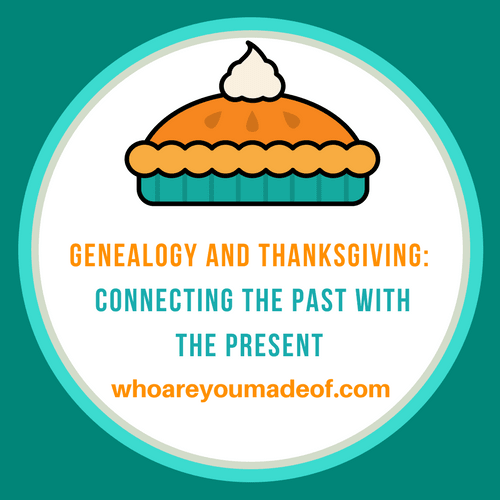
As a friend said to me recently, "something will be missing, because someone isn't around to make it anymore." It does seem hard to exactly duplicate the cooking of one's mother, great-aunt, or grandmother.
I will never forget the last Thanksgiving I had with my grandfather. Going to my grandparents house most years for Thanksgiving was the highlight of my year.
My grandmother always had us set the table with her fanciest china, heirloom red glasses to drink cranberry juice from, and the gold-plated silverware of which she was exceptionally proud. After eating until we couldn't take one more bite, we would bundle up and go for a long walk around the neighborhood - ostensibly, "making room for pie".
In reality, it was a lovely tradition that we all looked forward to. So for me, along with all of the other thoughts and feelings that I now have on Thanksgiving, I have to remember that I won't see my grandfather ever again.
I'm sure that I am not alone in missing someone on this special day.
Thanksgiving can be a happy, sad, cold, hot, frustrating, exhausting, painful, exciting and melancholy day. But what Thanksgiving always is is a day for reflecting and for giving thanks.
What could we be possibly be more grateful for than the fact that we exist? And to give thanks for this, we need to look to our parents, our grandparents, our great-grandparents, and generations upon generations of people whose lives came together just at the right time and place in order to eventually create incredibly special and unique people: you and me.
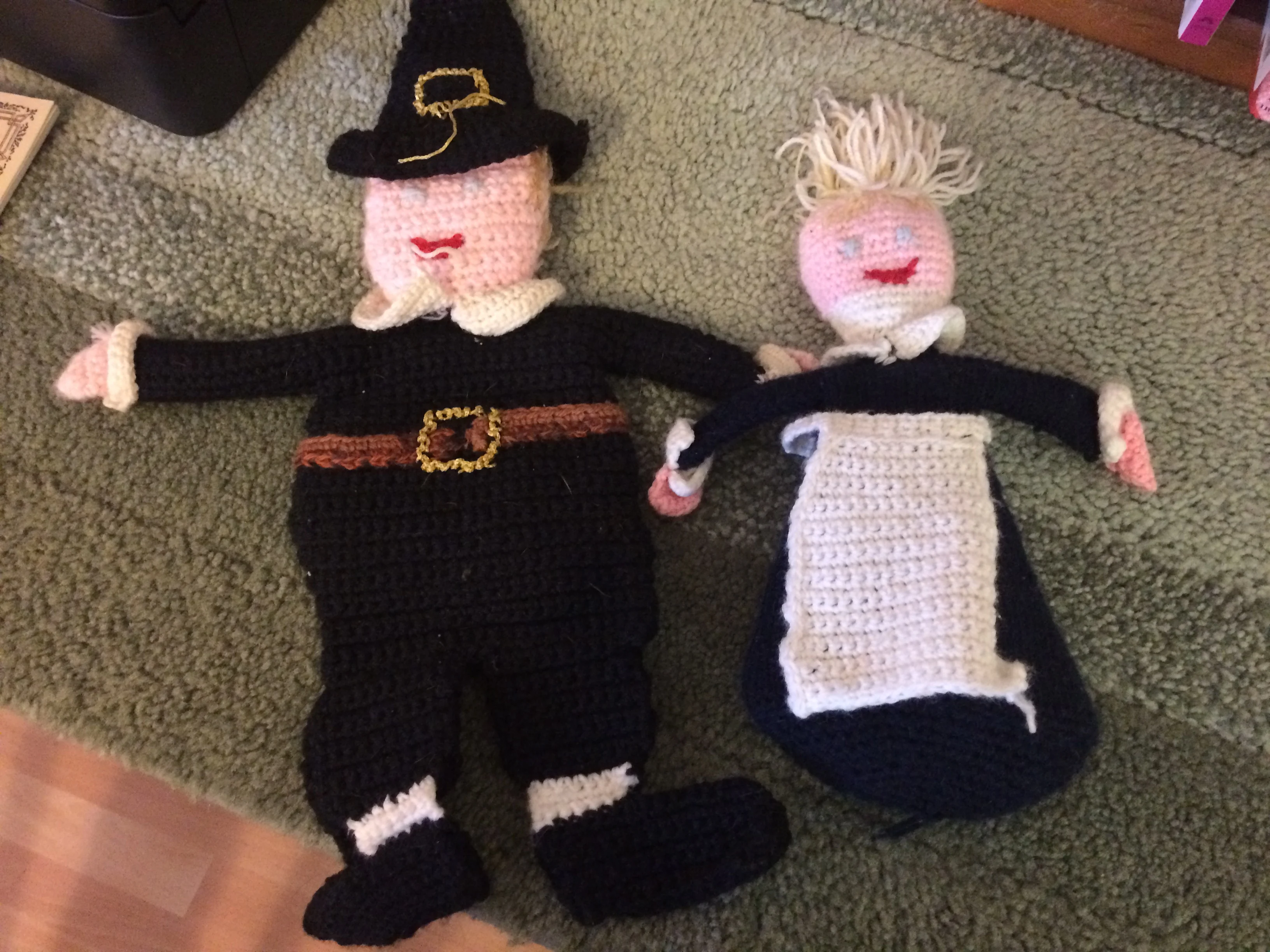
How to trace your roots to a pilgrim past
My family growing up was a mixed bag of backgrounds. Four of my mom's great-grandparents were first-generation immigrants.
My father also had first generation immigrants at the great-grandparent level. The rest of my great-great grandparents were descended from families who had been in the United States for generations - and sometimes, many, many generations.
My paternal grandmother, her mother, and her grandmother were all seasoned genealogists. My great-great grandmother was very proud of her family's heritage, which she had worked tirelessly to trace back as far as she could.
Genealogy research was no small feat back in the 1940's and 1950's, which was when she was at her most active in the hobby.
I'm glad she did all that work, however, since she was able to trace her lines all the way back to two different Mayflower families:
- Richard and Elizabeth Warren (I am descended from their grandson, Joseph, through their daughter Elizabeth)
- John and Priscilla Alden (I am descended from their granddaughter, Mercy Paebody, through their daughter Elizabeth)
Verifying genealogy researching using DNA testing
I consider myself a relatively skeptical person, and so I was actually expecting to find evidence that my great-grandmother's research was incorrect. My grandmother, from that line of the family, was kind enough to do a DNA test, and it was very helpful in determining her true lineage.
I had done my own independent research, which I can now do from the comfort of my living room, instead of traveling around the country like my great-great grandmother did in her time. I wanted additional evidence in support, or against, however, and was hoping that DNA could provide it.
Let the chips fall where they may, I said! I was ready to turn my family's long-held belief that we were practically American royalty on it's head. I'm most definitely joking about the American royalty part.
As it turns out, my grandmother has multiple verified DNA connections with descendants of the great-great grandchildren of those Mayflower grandchildren (Mercy and Joseph). If you are interested in doing this yourself, the best place to test is Ancestry because most users (especially those with extensive US roots) have very nice family trees connected to their DNA.
The website gives you "ThruLines" which let you know which ancestor you share in common with your DNA matches. This saves so much time!
You can click on this (sponsored) link to get your DNA test: Discovery the story AncestryDNA® can tell This is a great way to verify what you've already learned with traditional genealogical research or discover unknown history.
The elephant at the Thanksgiving dinner table
Apart from the fact that most of the people who came over on the Mayflower were not royalty of any sort, those of us who are descended from these individuals are also in the awkward position of knowing that our ancestors were directly involved in some of the most shameful events and eras of our country's history.
Obviously, we are not responsible for the sins of our fathers, per se, but did think this worth mentioning, because it is very directly related to the discussion of Thanksgiving and why the holiday has a different meaning to every single family.
My children have extensive Native American ancestry, and we talk a lot about the complicated nature of the holiday. We all know what happened to the Native Americans in our country, and we all know who perpetrated the things that happened to them over the course of hundreds of years.
So how do we sit down and enjoy a delicious meal, in honor of our Pilgrim ancestors, without feeling as if we are disrespecting the memory of others?
And what of those people who are the children of relatively recent immigrant ancestors? How should they feel while participating in this quite American holiday?
Or people who are descended from those who suffered under the burden of slavery while fueling the growth of our nation? And there are many people who are descended from all of these groups of people.
How do you celebrate Thanksgiving with all of these mixed feelings?
How to eat a plate of turkey on the fourth Thursday of November without feeling like a traitorous person who has chosen sides? If I do this, does it mean that I have picked a favorite ancestor and scorned the rest?
Even for those who don't worry so much about the distant past, Thanksgiving can be a tough holiday. In some families, there is a history of abuse, conflict, or addiction.
Sometimes, we don't have so many good memories of our older relatives. I know that even in my own family, this is something that comes up every year.
The origins of Thanksgiving
The solution to this dilemma lies in the root of the history of a thanksgiving day. Many cultures around the world celebrate a day of thanks, Thanksgiving, or a harvest celebration.
It has been going on for hundreds upon hundreds of years, at least, and it makes a lot of sense. Why wouldn't you want to celebrate a fruitful harvest?
Many religious traditions include the requirement to celebrate harvests, or to observe a day of gratitude.
Did you know that the first Thanksgiving to be celebrated in North America was actually in Canada? Some historians say that the first Thanksgiving was celebrated in Canada in 1578.
Thanksgiving was celebrated in Britain even before Christianity was introduced. The origins are traced back to Lammas Day, a festival celebrating the annual wheat harvest.
When Christianity was introduced to the area that is now the United Kingdom, some of these ancient traditions survived.
As far as the history of an official day of thanks in the United States (once the country was actually formed), many people erroneously believe that Abraham Lincoln should be credited with the existence of this holiday. In reality, George Washington ordered that everyone observe a day of thanks - all because we won the war against the English.
(Does this mean that by celebrating Thanksgiving, you are celebrating the founding of our country? It does if you want it to, but if you don't want it to, it doesn't have to. Does that sentence even make sense?)
Whatever the origins of Thanksgiving, they are far from the actual myth of a bunch of pilgrims getting together with Native Americans and happily celebrating a good harvest. This may or may not have actually happened (there is strong evidence that a meal of this sort did take place).
But this wasn't really "Thanksgiving" as we know it today. They were eating a good meal and happy that they had survived the summer and had a good shot at making it through the winter.
Yes, there were other times that the pilgrims and their descendants celebrated good harvests and days of thanks. But as I mentioned before, this was a common custom in their country of origin anyway.
It's something that they would have been doing if they had stayed in England. Or Germany, as evidenced by the Erntedankfest.
Reconciling Thanksgiving
So at my house, we aren't celebrating a fantastical story and trying to imitate a meal that may or may not have happened in the way that we have been taught. We aren't celebrating the history of our country in a way that negates or ignores some of the negative aspects of that very history.
Instead, I view (and hope that my children do, too, or at least will someday) Thanksgiving as an opportunity to celebrate other things.
On Thanksgiving, we give thanks to every single person who, despite whatever hardship they may have experienced, came together to eventually "create" us. All of our ancestors, good, bad, and ugly, had a role in that.
We also give thanks for the fact that we live in the United States, no matter how we ended up here, since we have been afforded an incredible privilege that many people would, and do in fact, die for.
We give thanks for the family members that we have and that can be together with us on that day, and for the fact that we can afford to buy an abundance of food and can enjoy it on a day of leisure.
These are tangible reasons to give thanks, and to celebrate a day of Thanksgiving. As the English poet, William Blake, famously said, "The thankful receiver bears a plentiful harvest".
And at my house, we are thankful receivers, exceptionally aware of the sacrifices that have been made so that we can sit where we are and eat a meal together. This is something that we can all rally around, no matter how we feel about the events that have marked our families and our nation's history.
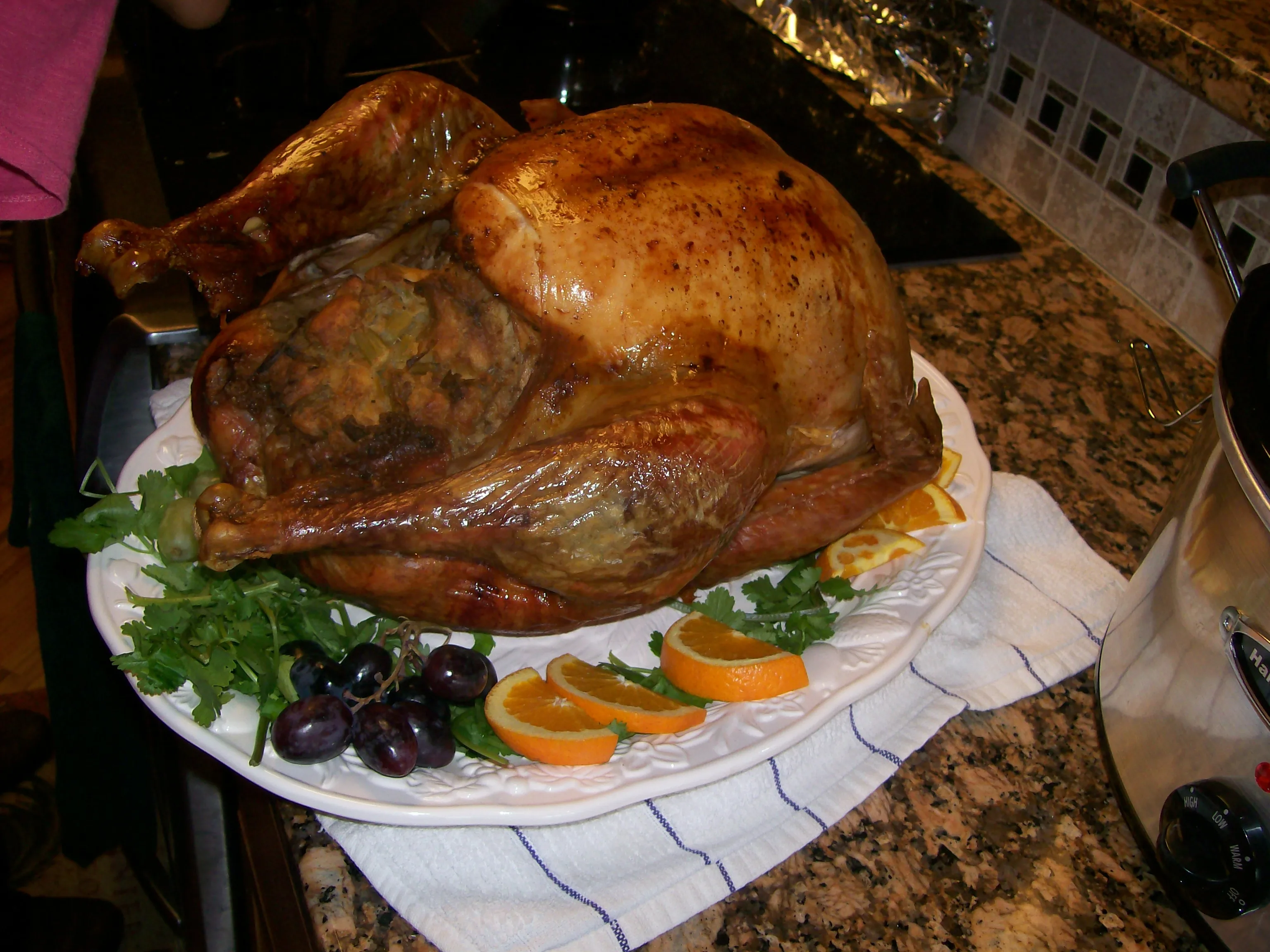
A turkey my mother made a few years ago... it looked fantastic and was perfectly browned. This is something that I am still working to achieve.
How genealogy, food, and Thanksgiving are related
I'm so glad that we can now move on to something a little less deep, and a little more cheerful. It's hard to talk about all of that other stuff, since people tend to take Thanksgiving pretty seriously.
Something else that people tend to take very seriously is the food served on that day. In each family and part of the country, there are specific ideas of what should be on the table when people sit down to eat on Thursday afternoon.
Almost everyone considers that the main attraction of a Thanksgiving dinner to be the turkey, and while there are a few different ways to prepare and serve it, it hasn't changed much over the years. There are those who just have to be different and eat ham, or duck, I suppose.
There are also people with strong influences from other countries on their Thanksgiving meals. I have a cousin who serves Rouladen, German potato salad, and cucumber salad for her Thanksgiving - a tribute to her more recent German ancestry, no doubt.
And.. ahem... I would also say that there are probably a good number of vegans and vegetarians who are really missing out! Since I have been offending left and right in this post, I didn't want to leave anyone out!
The main protein choice aside, the food that can really give you an insight into a family's history are the side dishes. Choices about whether or not to put the stuffing inside the turkey, whether or not to put marshmallows inside the sweet potato casserole, or whether a proper gravy is made with the drippings from the turkey and/or the giblets, and whether or not to serve cranberry sauce are of utmost importance.
And I would be willing to bet that the preference of most people on these topics can be traced along your (probably maternal) lineage.
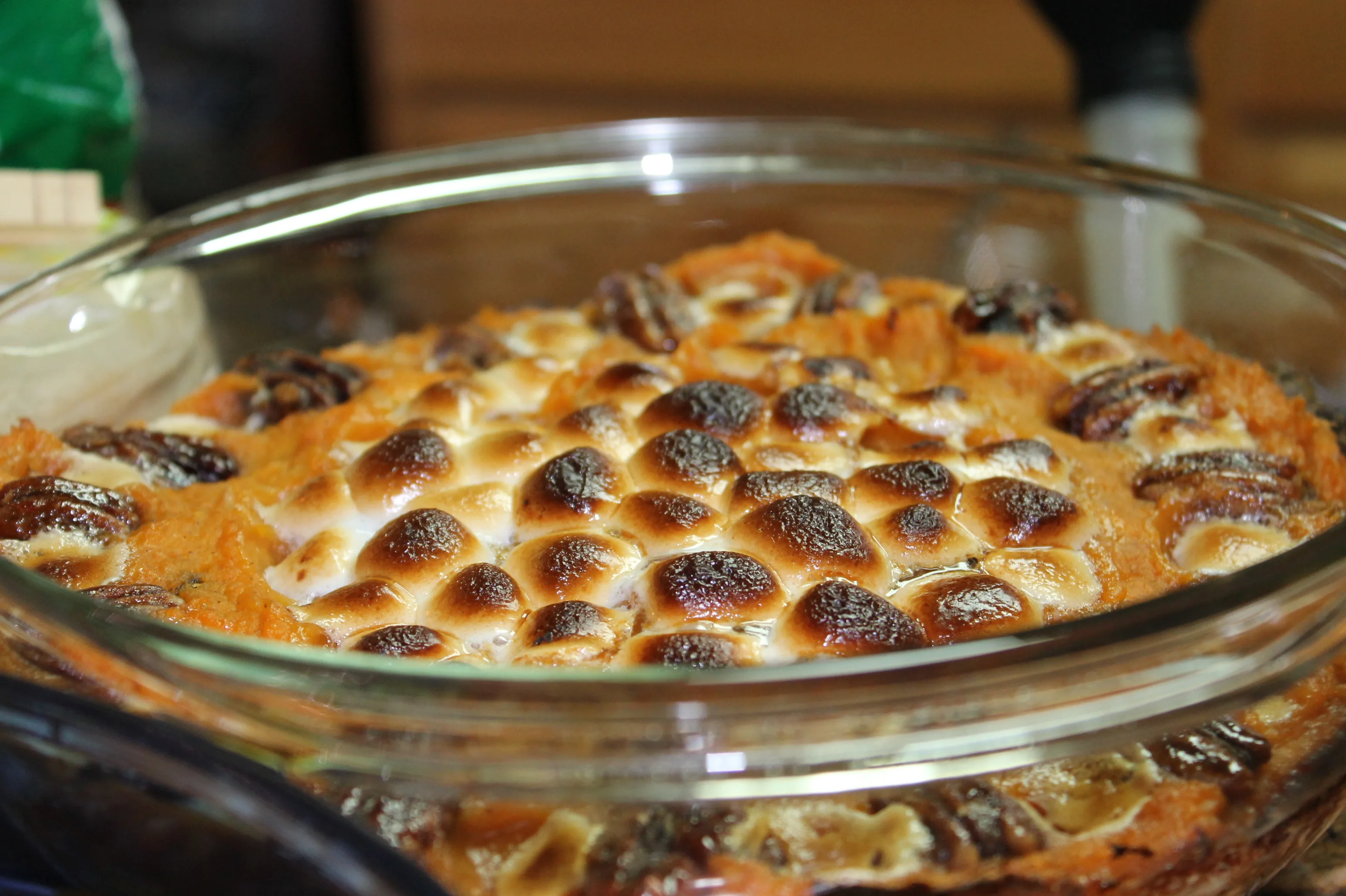
Two years ago, I decided to put marshmallows on top of the sweet potato casserole. This was in clear contrast to how my mother had always made her sweet potato casserole, which had nuts on top with a brown sugar glaze.
I felt like a real trailblazer when I decided to do it, but I regretted it as soon as I sat down to eat. For me, sweet potato casserole has glazed nuts on the top.
I was left with a gaping hole in my heart after that Thanksgiving meal, and I will never repeat that mistake again. Okay, I am exaggerating a bit about the gaping hole - but this year, there will be an ample supply of pecans on top of my sweet potatoes.
How Thanksgiving can help you carry on family culinary traditions
I believe it would be the case in many families that the best recipes are passed down through female family members - especially from mother to daughter. In my family, there was a tragedy that impeded the possibility that I might ever learn any sort of family recipe from my mother's mother's mother.
My great-grandmother died when my grandmother was only nine, and she had been sick with tuberculosis for a time before she passed. And even if she had survived to teach her daughter how to cook her favorite dishes, she would likely not have known any dishes specific to her parents' native Germany, since her mother died when she was only seven.
Two generations of tragedies, and an extensive loss of tradition and culture led to my mother having to develop her own food traditions, and thus, Thanksgiving, traditions for her family. So that's where our recipes come from.
She told me that my father had more of an established family tradition than hers did, so she tended to follow the lead of his family whenever there was a question about what customs that we should have in our unique family unit.
For many families, however, there is a long line of knowledge about traditional foods that have been passed down from generation to generation. I would really love to hear about traditions and dishes unique to your family in the comments - please share them with us.
Thanksgiving can be a time to create new family traditions
Since I have learned a lot about the origins of my ancestors over the past few years, I decided that I would try to learn a little bit about the types of foods that some of them may have eaten on Thanksgiving during their time.
I was especially interested in one particular line of my family, since when I started doing genealogy research several years ago, I didn't know anything about them.
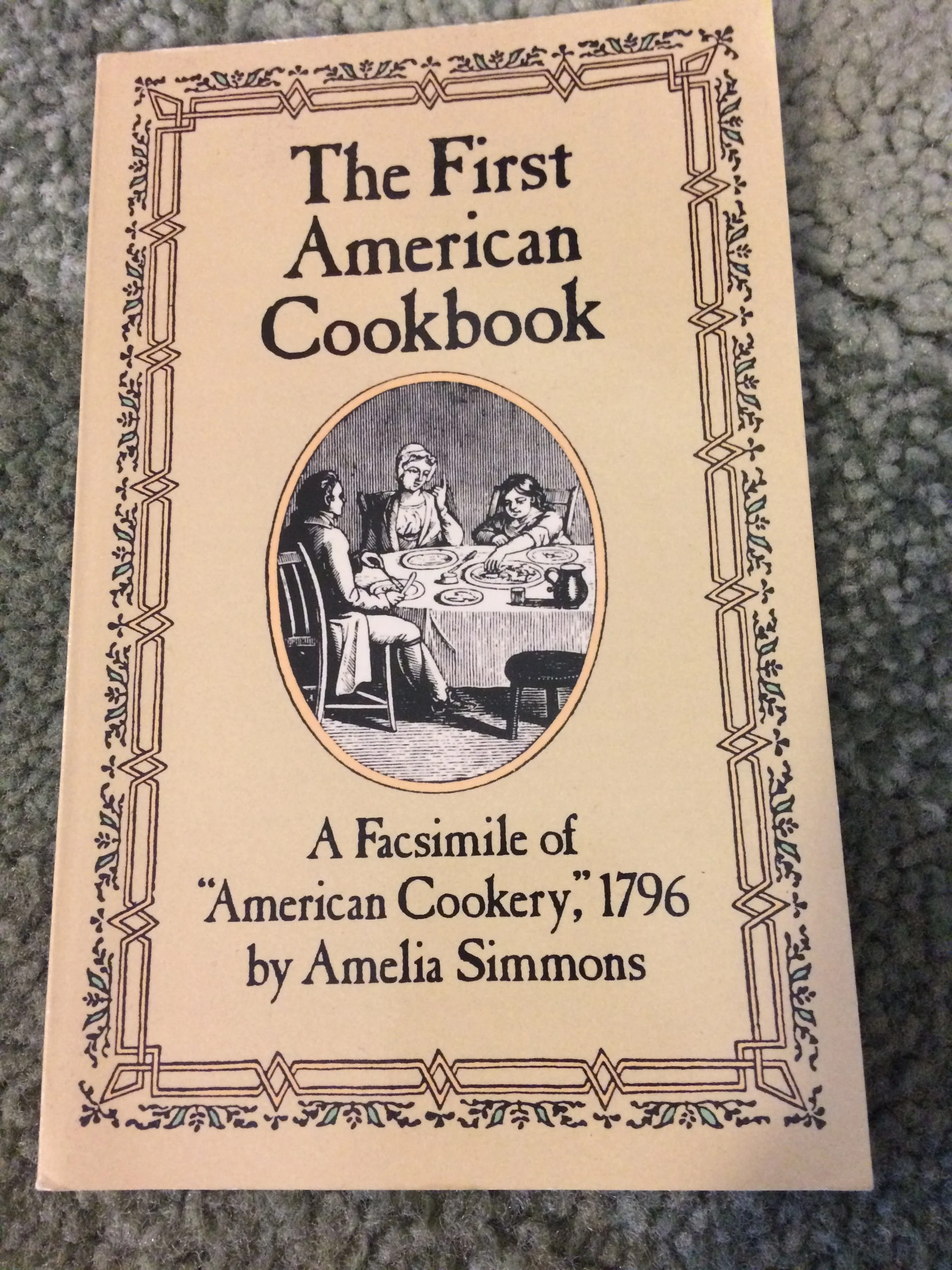
My mother's only continental US family line is descended from a Ryder family in Providence, Rhode Island. Curious about what people might have been eating back in the 1800s in New England, I bought The First American Cookbook: "American Cookery," 1796, by Amelia Simmons (cover shown above).
This was just the beginning of my exploration of the food that they might have been eating during their lifetimes.
Of course, I wouldn't just serve anything on Thanksgiving day, but I did eventually decide on two new dishes to make this year. After learning about the origins of Succotash, a traditional Native American dish, and oyster dressing, I thought that they would make good additions to our Thanksgiving dinner table.
(Note: We are making an oyster dressing with Andouille sausage, which I have read is a Louisiana tradition. I would be interested to know if anyone from that part of the US also cooks this!)
I hope that my family is pleased with the new additions to the Thanksgiving menus, and of course, I hope that my children will be some day interested in learning how to make some of their favorite dishes so that they can pass them down to figure generations, as well.
The one thing that we won't change this year? We'll make sure to save time for that special post-Thanksgiving walk around the neighborhood, where I am sure we will all remember my grandfather, talk, and enjoy our time together. And that's what Thanksgiving is all about, at the end of the day.
Conclusion
What traditions and foods do you look forward to eating during the holidays? I would love to see recipes, photos, and hear stories about your favorite Thanksgiving dishes and customs.
Thank you so much for stopping by to read this post!
